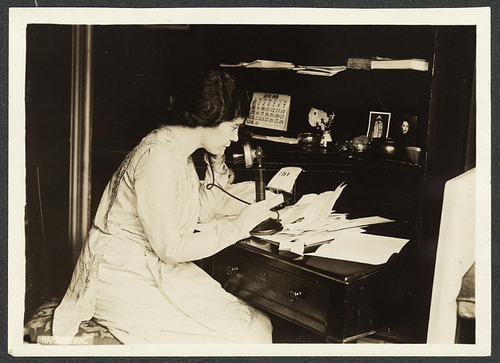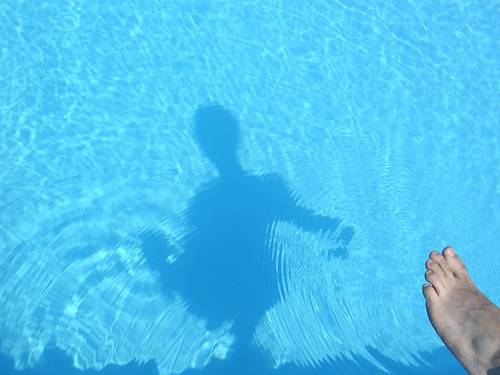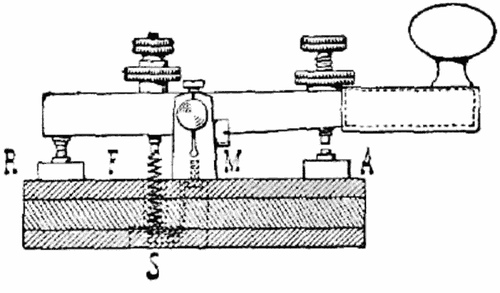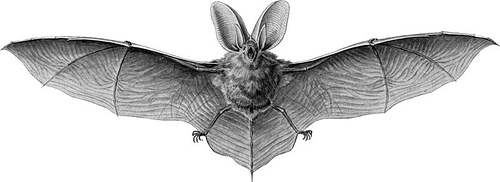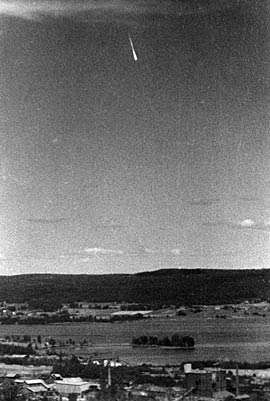
What is this? It was photographed by the Swedish army on July 9, 1946, one of thousands of such sightings over Scandinavia that summer.
Some witnesses said the objects maneuvered or flew in formation. A number of them crashed into lakes, but no debris was found; the army spent three weeks searching for a “gray, rocket-shaped object with wings” that reportedly crashed into Lake Kölmjärv on July 19, but found nothing.
Fearing that the Russians were testing captured German missiles, the U.S. government secretly sent Gen. Jimmy Doolittle and RCA president David Sarnoff to investigate. Sarnoff told the New York Times that “the ‘ghost bombs’ are no myth but real missiles.” Truman was told they were originating from the German village of Peenemünde, but there are no records of rocket launches there after the war.
Whatever they were, there were a lot of them. In September the sightings spread to Greece, Portugal, Belgium, and Italy. In all, 2,000 sightings were reported, 200 on radar. Most likely the objects were meteors, but officially no one knows.
